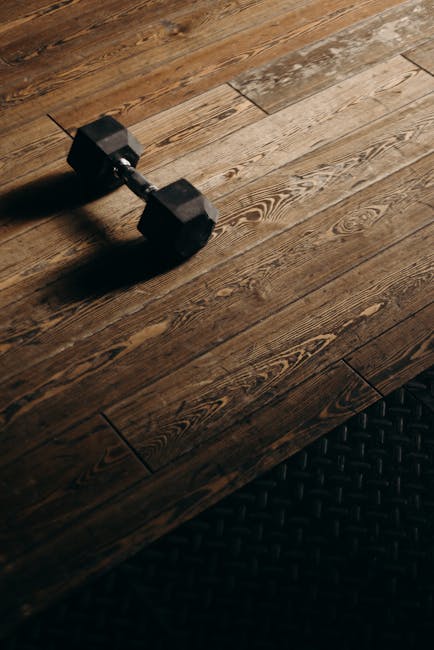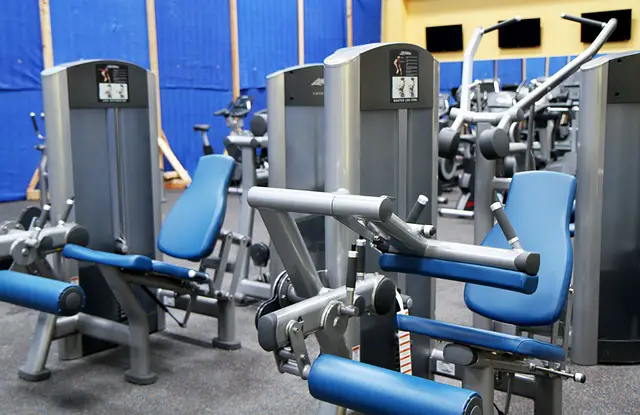Are you tired of the endless string of excuses you use to avoid lifting weights? “Oh, I don’t have time”, “I don’t want to look like a bodybuilder”, “I don’t want to hurt myself”? Well, we’ve got some news for you: weight lifting might actually be the reason behind your nagging elbow pain. Yes, you heard it right. That sweet, sweet satisfaction of hoisting those heavyweights could be coming at a cost that you never even imagined. Keep reading to find out more about weight lifting and its troublesome relationship with your elbows.
Contents
- 1 Weight Lifting: The Leading Cause of Elbow Tendonitis
- 2 Understanding Elbow Tendonitis from Weight Lifting
- 3 The Impact of Repetitive Motion on Elbow Tendons
- 4 Preventing Elbow Tendonitis in Weight Lifting Practices
- 5 Effective Treatment Modalities for Elbow Tendonitis Induced by Weight Lifting
- 6 The End of the Weight Lifting Takedown
Weight Lifting: The Leading Cause of Elbow Tendonitis
So you think weight lifting is the best thing since sliced bread, huh? Well, hold on to your dumbbells because there’s a downside to all that lifting. It turns out that weight lifting is the leading cause of elbow tendonitis. Yes, you read that right. Those bulging biceps and chiseled triceps come at a price.
Elbow tendonitis is a condition that results from overuse of the elbow joint. When you lift weights, you put your elbow joint under a lot of stress, which can cause tiny tears in the tendons that attach the forearm muscles to the elbow bone. Over time, these tears can become inflamed and painful, leading to elbow tendonitis.
Don’t let elbow tendonitis put a damper on your lifting routine. There are a few things you can do to prevent it. Keep your lifting sessions moderate and don’t push yourself too hard. Use proper form when lifting to avoid putting unnecessary stress on your elbow joint. And always remember to stretch before and after your lifting sessions. So, go ahead and lift those weights, but do it responsibly, or you might find yourself nursing a case of elbow tendonitis.
- Keep your lifting sessions moderate
- Use proper form when lifting
- Stretch before and after your lifting sessions

Understanding Elbow Tendonitis from Weight Lifting
What you need to know about Elbow Tendonitis from Lifting Heavy Weights
Alright, so you’ve been hitting the gym and pushing those weights, trying to get those bulging muscles. But did you know that lifting heavy weights can cause elbow tendonitis? Now before you panic and rush to the doctor, read on to understand what it is, and more importantly, how you can prevent it.
First of all, elbow tendonitis is a fancy way of saying that you’ve got inflammation in your elbow tendons. It can happen to anyone, including seasoned weightlifters. The main cause of elbow tendonitis is repetitive stress and overuse. So, if you’re always using the same muscles and lifting the same weights, your elbow tendons can become frayed and damaged – not so nice, huh?
But fear not, dear weightlifter, there are ways to prevent elbow tendonitis from happening. Here are some tips to keep those elbows healthy and happy:
- Vary your workouts and use different muscle groups to prevent overuse of one muscle group
- Use proper lifting techniques, always – remember to lift from your legs and not your back
- Stretch, stretch, stretch – before and after every workout session.
So there you have it – a beginner’s guide to elbow tendonitis from weightlifting. In conclusion, take care of your muscles and tendons, mix up your workout routine and try not to focus on one body part too much. Happy lifting!
The Impact of Repetitive Motion on Elbow Tendons
Have you ever felt a sharp pain in your elbow after a day of typing or playing tennis? That’s because repetitive motion can seriously damage your elbow tendons over time. It’s like a slow and steady game of whack-a-mole, where your tendons are the unfortunate victims.
Let’s break it down. When you repeatedly move your arm in the same way, you’re putting a ton of stress on the tendons that attach your elbow to your forearm. Those tendons can become inflamed, irritated, or even tear. It’s like doing a thousand bicep curls without a break – your arm might look great, but your elbow is going to be mighty pissed.
Now, I know what you’re thinking. “But I love playing Candy Crush for six hours straight!” Trust me, I get it. The good news is that there are ways to avoid elbow tendonitis. For starters, take frequent breaks and stretch your arms and wrists. You can also try using an ergonomic keyboard and mouse to reduce strain on your tendons. And if all else fails, just switch to playing Farmville. It may not be as thrilling, but at least your elbow will thank you.
Preventing Elbow Tendonitis in Weight Lifting Practices
Ah, the notorious elbow tendonitis. No weight lifter has ever escaped its grasp, but that doesn’t mean we can’t try to prevent it. Here are some tips and tricks to keep those tendons healthy and happy:
Firstly, warm up! It’s like stretching before a run; you gotta get those muscles ready for the main event. Do some light weight lifting, stretch those arms out, and get the blood flowing. You don’t want those tendons to be caught off guard when you start lifting those heavy weights.
Secondly, proper form is key. You may think you look like a bad-ass when you fling those weights around, but you’re just setting yourself up for injury. Keep those elbows close to your sides, and don’t lock them out at the top of the lift. Plus, if you’re using proper form, you’ll actually target the muscles you’re trying to work on. Crazy concept, I know.
Lastly, listen to your body. If you start feeling some pain in your elbows, don’t just brush it off like it’s nothing. Take some time off from lifting, ice those bad boys up, and let them rest. And no, “rest” does not mean “re-runs of Friends on the couch with a bag of chips.” It means actively taking care of your body so it can heal properly.
In conclusion, elbow tendonitis may be the enemy of all weight lifters, but with these tips and tricks, we can fight back. Warm up, use proper form, and listen to your body. And hey, if all else fails, just switch to leg day for a while. Can’t get tendonitis in your knees if you skip arm day altogether.
Effective Treatment Modalities for Elbow Tendonitis Induced by Weight Lifting
When you’ve been at the gym pumping iron for months, it’s natural to experience a bit of elbow tendonitis. Who knew lifting heavy stuff could be so bad for you, right? But fear not, dear reader, for there are plenty of effective treatment modalities out there that can help you get back on track.
First up, make sure you’re icing that bad boy regularly. This can help reduce inflammation and ease any discomfort you’re feeling. And don’t be afraid to pop a couple of anti-inflammatories while you’re at it. Nothing like the sweet, sweet relief of Advil in the morning.
Another great option to consider is physical therapy. You might think it’s a pain in the butt (or the elbow, as it were), but trust us, it’s worth it. A skilled therapist can help you work through any muscle imbalances or improper lifting techniques that may be contributing to your tendonitis. Plus, they might just give you a killer massage while they’re at it. Win-win, baby.
Lastly, don’t underestimate the power of rest. This one might seem obvious, but it’s worth reiterating. If you’re pushing yourself too hard at the gym without giving your body proper time to recover, you’re only going to exacerbate any existing injuries. So take a break, put your feet up, and rest that elbow. You’ll be back to lifting heavy in no time.
The End of the Weight Lifting Takedown
Well folks, it looks like we’ve lifted the lid on the real culprit behind elbow tendonitis: weight lifting. But fear not my gym-loving comrades, for all is not lost! With some proper form, a thorough warm-up, and gradual increases in weight, you too can avoid the curse of the Golfer’s (or Tennis) Elbow. So hit the weights with caution, and remember, it’s not about how much you lift, it’s about how much you can lift without injuring yourself. Keep those elbows strong, and keep those gains coming!








Leave A Comment